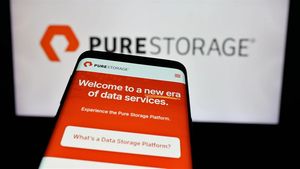Let’s face it — nobody enjoys waiting rooms.
They're the purgatory between “I don’t feel well” and “I hope someone sees me soon.” The magazines are outdated, the chairs squeak, and every cough feels like the soundtrack to your anxiety.
But what if waiting didn’t have to feel like waiting?What if patients were engaged, informed, and maybe even grateful for the time they spent there?
Welcome to the future of patient satisfaction — where engagement tools turn idle moments into meaningful ones.
The Problem with the Status Quo
In many clinics across Canada, the waiting room is a black hole: time disappears, tempers flare, and trust erodes.
According to a 2023 StatCan report, 41% of patients said that long or uncertain wait times affected how they felt about their care — even when the care itself was excellent. That’s a big problem.
And it’s not just a matter of patience — it's about perceived respect. When people feel uninformed or ignored, it sends a message: you’re not a priority.
Spoiler alert: technology can fix this — and not with sci-fi robots, but with thoughtful, human-centered tools already working in real Canadian clinics.
1. Digital Self Check-In Kiosks or Tablets
Gone are the days of clipboard-and-pen chaos.
Digital kiosks or tablets let patients check in upon arrival without lining up at the front desk. With just a few taps, they can:
-
Confirm their appointment,
-
Update contact or insurance info,
-
Notify staff of their arrival.
For staff, it’s a dream: less paperwork, fewer errors, and a smoother flow.
For patients? It’s empowering.
A 2022 pilot across several British Columbia clinics found that introducing check-in tablets reduced front desk congestion by 30% and improved wait time perception by 22%.
It’s like self-checkout — but instead of buying bananas, you’re getting medical care.
And let’s talk paper. Or better — the lack of it. Paper forms get lost, are hard to read, and let’s be honest — no one enjoys juggling clipboards while trying to remember their medication list. That’s why modern clinics are shifting toward paperless check-in systems. By letting patients check in digitally — either at home or in the waiting room — clinics can eliminate bottlenecks, reduce human error, and create a smoother front-desk experience for everyone. Want to see how it works in action? Try Paperless Check-In and discover how Cortico helps streamline patient flow from the moment they walk in (or even before they do).
2. Pre-Visit Digital Intake Forms
Let’s say you booked an appointment online. Imagine receiving a message that says:
“Hi there! You can complete your intake now so your doctor has all the info ready before your visit.”
Boom. Now, your medical history, current symptoms, allergies, and concerns are already logged. The appointment becomes focused and personalized.
Clinics using this model see shorter appointment times, better documentation, and fewer awkward silences while a nurse deciphers your handwriting.
It’s like showing up to a restaurant and having the chef already know your allergies and favourite dish. Efficient and personal.
3. Real-Time Wait Time Displays
Nothing induces stress like waiting in the dark.
Having a screen in the waiting room — or even better, in a mobile app — showing estimated wait times, changes the experience entirely.
Patients can:
-
Relax, knowing where they stand,
-
Step out for a coffee without fear of missing their turn,
-
Feel respected through simple transparency.
In a 2023 survey by OntarioMD, 68% of respondents said visible wait times improved their overall satisfaction, even when the wait was long. Why? They felt in control.
That’s powerful — and costs little to implement.
4. Health Education Content on Screens
Let’s be honest. If someone’s going to wait 15–30 minutes, you might as well give their brains something healthier than a six-year-old Chatelaine magazine.
Health content — displayed on digital screens — can:
-
Provide tips on flu season, vaccinations, mental health,
-
Promote clinic programs (dietary coaching, smoking cessation),
-
Encourage preventive care (Pap smears, blood pressure checks).
In Alberta clinics trialing this approach, 82% of patients reported that the content was useful — and 23% said it encouraged them to ask new questions during the visit (source: Alberta Health Services, 2024).
In short, education replaces agitation.
5. Two-Way Messaging with Clinic Staff
Here's where the real magic happens.
Imagine being able to send a message like:
“Hi, I’ve arrived. Just wondering how long the wait is?”
And getting a friendly, human reply — without having to hover near the desk or wave awkwardly at the receptionist.
Two-way messaging via mobile or tablet systems allows patients to:
-
Get real-time updates,
-
Ask questions discreetly,
-
Feel seen — even in a busy environment.
Clinics using Cortico Health’s messaging feature reported a 35% drop in waiting room complaints. That’s huge — and it’s mostly about communication, not clinical care.
Bonus: Entertainment and Environment
Let’s not forget the basics:
-
Free Wi-Fi, because not everyone wants to use up their data,
-
Charging stations, because dead phones = frustrated parents,
-
Kid-friendly corners, because happy children = sane parents.
While not strictly “digital engagement,” these amenities create an atmosphere of respect and hospitality — a crucial part of the healthcare experience.
And as they say, “you never get a second chance to make a first impression.”
Seamless Integration with Online Booking
Of course, all of this works best when it connects to a streamlined booking system.
When patients can:
-
Book online in 30 seconds,
-
Receive reminders via text or email,
-
Pre-fill their intake forms,
-
Get live updates,
...they’re not just engaged. They’re loyal.
Platforms like Cortico Health offer full integration from scheduling to follow-up, making the clinic experience feel cohesive — not like a patchwork of disconnected steps.
If you're looking for modern online booking for medical clinics that includes these patient engagement tools by default — well, you know where to click.
Final Thoughts: A New Waiting Game
Waiting is inevitable.But dissatisfaction? That’s optional.
By rethinking what happens while patients wait, clinics can turn “downtime” into meaningful interaction, education, and trust-building.
To quote Maya Angelou:
“People will forget what you said, but they will never forget how you made them feel.”
So why not make your patients feel seen, heard, and — dare we say it — even appreciated?
Because in the long game of patient loyalty, the waiting room is your front line.
Ready to transform it?
Explore smarter tools for your clinic’s waiting experience with Cortico’s all-in-one platform for online booking for medical clinics.
P.S. Your next patient is already in the waiting room.Let’s make sure they want to come back.
Media Contact
Company Name: Cortico Health Technologies
Contact Person: Kenneth C. Faulkner
Email: Send Email
Country: Canada
Website: https://cortico.health/





